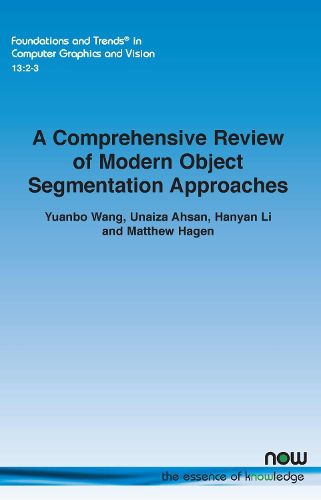Readings Newsletter
Become a Readings Member to make your shopping experience even easier.
Sign in or sign up for free!
You’re not far away from qualifying for FREE standard shipping within Australia
You’ve qualified for FREE standard shipping within Australia
The cart is loading…






This title is printed to order. This book may have been self-published. If so, we cannot guarantee the quality of the content. In the main most books will have gone through the editing process however some may not. We therefore suggest that you be aware of this before ordering this book. If in doubt check either the author or publisher’s details as we are unable to accept any returns unless they are faulty. Please contact us if you have any questions.
Automated visual recognition tasks such as image classification, image captioning, object detection and image segmentation are essential for image and video processing. Of these, image segmentation is the task of associating pixels in an image with their respective object class labels. It has a wide range of applications within many industries, including healthcare, transportation, robotics, fashion, home improvement, and tourism.
In this monograph, both traditional and modern object segmentation approaches are investigated, comparing their strengths, weaknesses, and utilities. The main focus is on the deep learning-based techniques for the two most widely solved segmentation tasks: Semantic Segmentation and Instance Segmentation. A wide range of deep learning-based segmentation techniques developed in recent years are examined. Various themes emerge from these techniques that push machines to their limits, and often deviate from human perception principles. In addition, an overview of the widely used benchmark datasets for each of these techniques, along with the respective evaluation metrics to measure the models' performances, are presented. Potential future research directions conclude the monograph.
This monograph serves as a good introduction to the automated visual recognition task of image segmentation and is intended for students and professionals.
$9.00 standard shipping within Australia
FREE standard shipping within Australia for orders over $100.00
Express & International shipping calculated at checkout
This title is printed to order. This book may have been self-published. If so, we cannot guarantee the quality of the content. In the main most books will have gone through the editing process however some may not. We therefore suggest that you be aware of this before ordering this book. If in doubt check either the author or publisher’s details as we are unable to accept any returns unless they are faulty. Please contact us if you have any questions.
Automated visual recognition tasks such as image classification, image captioning, object detection and image segmentation are essential for image and video processing. Of these, image segmentation is the task of associating pixels in an image with their respective object class labels. It has a wide range of applications within many industries, including healthcare, transportation, robotics, fashion, home improvement, and tourism.
In this monograph, both traditional and modern object segmentation approaches are investigated, comparing their strengths, weaknesses, and utilities. The main focus is on the deep learning-based techniques for the two most widely solved segmentation tasks: Semantic Segmentation and Instance Segmentation. A wide range of deep learning-based segmentation techniques developed in recent years are examined. Various themes emerge from these techniques that push machines to their limits, and often deviate from human perception principles. In addition, an overview of the widely used benchmark datasets for each of these techniques, along with the respective evaluation metrics to measure the models' performances, are presented. Potential future research directions conclude the monograph.
This monograph serves as a good introduction to the automated visual recognition task of image segmentation and is intended for students and professionals.